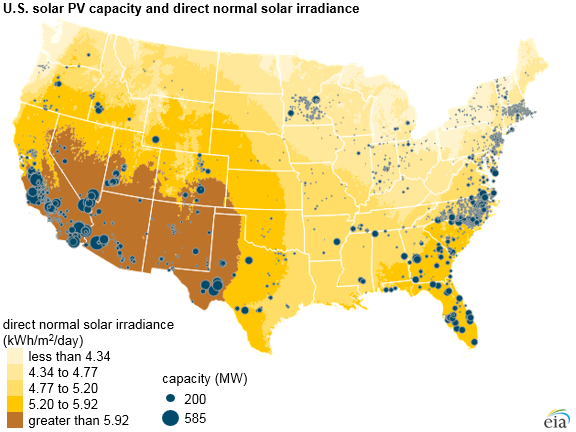Why Does Minnesota Have More Power Plants Than Texas?
Minnesota has more power plants than Texas, according to federal Energy Information Administration (EIA) data. This is despite the fact that Minnesota has 23 million fewer people than the Lone Star State, and that Texas requires six times more electricity than Minnesota. This is simply mind boggling.

The main reason Minnesota has more power plants is because of our solar energy mandate and Community Solar program. These programs incentivize smaller, more-expensive forms of solar rather than larger utility-scale solar installations. Make no mistake, solar in Minnesota doesn’t make sense because it is “too expensive” to clear snow off of the panels, but if we are going to build solar panels as a result of bad policies at the state level, we should at least attempt to do them in a way that is less expensive.

The graphic above shows an enormous number of small solar installations in Minnesota, whereas there are hardly any in neighboring states. This is because Minnesota’s Community Solar program requires Xcel Energy to pay $135 per megawatt hour (which is more than four times more than the electricity generated at Sherco) for each of these Community Solar installations. Xcel estimates the additional costs associated with these solar installations would cost the average Minnesota family an additional $39 per year.
Minnesota is currently on the wrong track for energy policy, and it appears Governor Walz wants to quadruple down on the failures of previous administrations who attempted to pick winners and losers in the energy market, but instead left us in a position where we are subsidizing and mandating wind and solar, essentially preventing the losers from losing.
If Minnesota lawmakers are truly convinced that climate change is an “existential crisis” they would be pounding the table for allowing new nuclear power plants to be built, amending the Next Generation Energy Act to allow large hydro to count as “renewable” (it currently doesn’t, amazingly), and pleading coal plants to look into using technologies like carbon capture and sequestration, rather than ignore this technology. In the end, it is impossible to take their shrill cries seriously because the insist on addressing this “crisis” in the most expensive and least effective way possible.